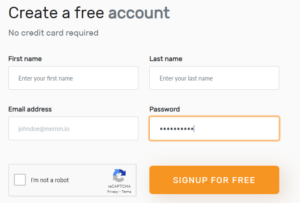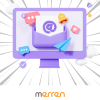The first interaction a customer has with your product or service is crucial. It sets the tone for the entire relationship and can determine if they become a loyal customer or move on to your competition. This is where Customer Onboarding comes into play. In this blog post, we will cover all aspects of Customer Onboarding – from what it is and why it matters to best practices for creating an effective onboarding workflow. We’ll also discuss how to utilize technology to simplify the process, common mistakes to avoid, and how to continually improve your onboarding program.
What is Customer Onboarding?
Customer onboarding refers to the practice of introducing new customers to your product or service, educating them on how to use it, and creating a positive experience that promotes customer loyalty. By effectively onboard customers, businesses can increase retention rates and reduce churn. This process also includes addressing their pain points and offering solutions that they can meaningfully use before they start on a new customer journey with your organisation.
Why does onboarding new customers matter?
Onboarding new customers is essential to creating a positive connection with them. It enables them to comprehend how your product or service can benefit them, reducing churn rates and increasing customer lifetime value. It also allows you to receive feedback and enhance your offerings. Every process collectively is a part of your customer experience protocol from welcoming the first customer to serving them consistently during the user journey.
Create A Workflow for Onboarding New Customers
When it comes to onboarding new customers, creating a seamless and enjoyable experience is crucial for customer success and retention. To achieve this goal, it’s essential to follow a structured onboarding workflow that guides each customer through key milestones. Start by identifying these milestones and mapping out a step-by-step process for achieving them. Creating checklists or templates can also be helpful in guiding both your team and the new user through their onboarding journey.
Automating onboarding milestones
There are many ways to automate onboarding, such as using workflows triggered by specific milestones. This helps guide new users through your product step-by-step without overwhelming them. Additionally, automation reduces friction and allows team members to focus on providing exceptional customer service. By automating the onboarding process, you can also use best practices like welcome emails and notes, demo videos or tutorials , checklists and documentation to ensure the customers are fully equipped before they become a part of the organisation.
Using standard templates
Effective use of a standardized template can simplify the onboarding process for new customers. It’s a great way to help users understand the value of your product without causing confusion or frustration. The templates help create an error-free and smooth onboarding experience that is easy to follow step by step. The templates can be upgraded from time to time and automated with any manual intervention.

Free trial and demo facilities
New leads can come with a set of obstacles and apprehensions from the get go. It is important to offer them a free trial (if possible) such that they can enjoy a product tour before offering any long term commitments. This can be offered via product demos or free trials which can help customers understand the user interface and decide on the next step of action.
Customer Relationship Management (CRM) and Onboarding
It’s important to remember that Customer Relationship Management (CRM) plays a critical role when it comes to the onboarding process. Providing a positive first impression through a customer-friendly onboarding experience is key for boosting customer success and customer retention. Personalization is key here! You can send personalized welcome messages and provide clear instructions to help them navigate their way through your app or platform. Take advantage of templates, tutorials, demos or product tours — these are all great ways to simplify your client onboarding process! Measuring success through metrics like customer effort score or customer satisfaction scores allows you to see where you’re succeeding and where you need some improvement.
Using walkthroughs as a guide
Using a step-by-step walkthrough during the onboarding process can make all the difference. These tutorials guide users towards understanding how they can use your product or service optimally. Walkthroughs are interactive and customized- tailored to meet unique user requirements and fit effortlessly into each customer’s journey. By doing so, you reduce friction for new clients and increase the probability of getting a permanent customer.
Customer on-boarding and documentation
When it comes to successfully onboarding new customers, good documentation can be of great help. A well curated user manual will be clear and concise, while instructional videos in various formats can help ensure that all users are comfortable using your product or service. However, it’s not just about the materials; personalized communication with your team throughout the process can also make all the difference in creating a positive onboarding experience.
5 Best Practices for Effective Customer Onboarding
A successful onboarding experience is essential for retaining new customers and boosting customer success. How can you make sure that your customers are onboarded effectively? Start by defining your onboarding process and setting specific goals for the customer journey. It’s also important to tailor the experience to meet their unique needs while using various communication channels like Whatsapp surveys, dynamic email surveys or social media platforms. Provide helpful resources such as tutorials, templates, or a knowledge base to guide them step-by-step through the process.
Who should own the onboarding process?
The onboarding process should be owned by a team specialized in customer success and retention, with a profound understanding of their needs. Collaboration between departments is necessary, with clear communication channels to ensure alignment. Metrics and KPIs must be established for evaluation and improvement.

Identifying onboarding program goals
Designing a personalized onboarding experience by identifying your onboarding program goals. Set a clear objective like reducing churn rate or improving product adoption. This lays out a roadmap for providing a seamless transition from sign-up to using your app or software. While guiding them through this journey make sure you communicate the unique value of your product clearly and provide tutorials or templates where necessary.
A review system for continual improvement
Review systems help you identify areas of improvement by continually seeking feedback from your user base. Customer experiences are greatly improved when they feel heard and valued by companies. Use metrics such as time spent onboarding, completion rates, customer effort score or CES to measure the effectiveness of your process regularly. Improved reviews equals loyal customers and most importantly, a paying customer in the long run.
Putting automation to work
Making use of technology while onboarding new customers, is one of the best ways to ensure that new users have a successful customer journey. Automating the sales process can be a clever way to avoid manual errors and make the on-boarding process delightful. This can be from a simple follow-up email, welcome email to taking the new lead through a product journey. There can also be pop up notes inside the software that can help them navigate through any SaaS companies and websites. Using AI capabilities, the service team can assess obstacles real time to improve the customer onboarding experience.

Capture customer satisfaction metrics sooner
Staying in touch with your customer on a frequent basis is a good way to stay on top of the mind of any user. Communicate with them on their email inbox, via messenger based surveys or via in-app messages. While the user may have signed up for your product or services, it is crucial to capture their insights at certain milestones. This can be done by mapping their journey from the start. Deploy Whatsapp surveys, in-app surveys or email surveys and capture metrics of customer satisfaction score, customer effort score and new promoter score from time to time.
Conclusion
An effective customer onboarding is essential to establish a strong relationship with your customers from the start. It’s a process that requires time, effort, and patience but provides long-term benefits such as customer loyalty and higher retention rates. By implementing the best practices, you can create a successful onboarding process for your customers. Remember to identify program goals, automate milestones, and utilize templates to simplify the process. Always be prepared for changes and continually review and improve your onboarding process.
Want to capture customer metrics using Merren? Sign up for our 14 day free trial and we do not need any credit card details. Now capture the reviews of happy customers and be a champion of the customer success team. Merren is a robust tool for all your CX needs.





